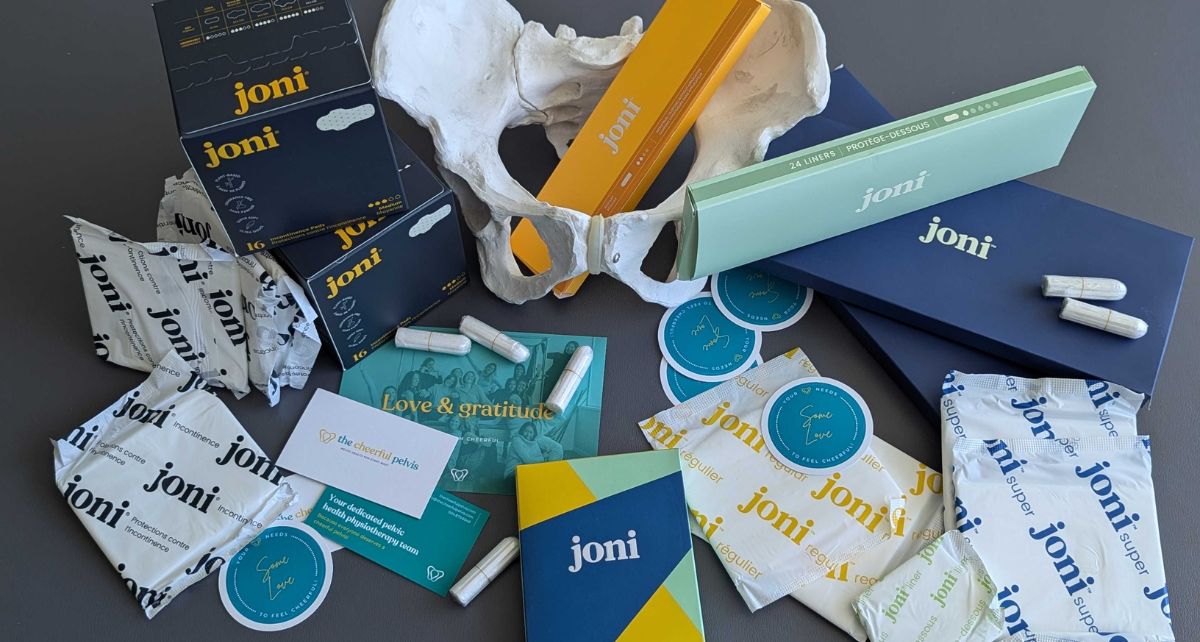If you’re dealing with urinary incontinence, otherwise known as bladder leakage, know that you’re not alone! It’s a common pelvic floor symptom often associated with postpartum and menopause, but it can affect folks at any stage of life. In fact, recent studies estimate that more than 50% of people assigned female at birth experience urinary incontinence.¹
Bladder Leakage and Barriers to Exercise and Leisure
Unfortunately, many folks who deal with incontinence suffer in silence, avoiding situations or activities where they might leak, like leisure activities, sports, and exercise. A third of the folks in those studies report that their pelvic floor symptoms pose a significant barrier to exercise. And two-thirds of people with pelvic floor symptoms stop exercising altogether, citing embarrassment about leaking, frustration that they can’t exercise the way they want to, and “too much planning involved” as key reasons.²/³
Those who do modify their activities to minimize incontinence might feel they have to wear dark clothing to hide leaks, empty their bladder prior to exercise, or take bathroom breaks during activity, while others might resort to restricting fluids, which can lead to dehydration and impair performance
.
The bottom line? Bladder leaking can lead to a tendency to avoid or restrict social situations, exercise, and leisure. In turn, this can have a negative impact on both mental and physical well-being.
Treating Bladder Leakage: Understanding Factors and Techniques
Traditionally, pelvic floor muscle exercises, also known as Kegels, have been considered a standard treatment for urinary incontinence. While they can be very effective for the majority of people, they may not work for everyone.
Firstly, many people don’t do Kegels correctly, which can make them less effective. People also tend to think of Kegels only as strengthening exercises for the pelvic floor, but they are more than that; while strengthening is key, it’s also important to train the timing of the pelvic floor contraction as well as relaxation of these muscles. Sometimes, leaking happens not because someone’s pelvic floor is too weak, but because it is too tight or lacks coordination.

You might also be surprised to learn that factors besides the pelvic floor can contribute to incontinence, especially with higher-intensity activities like lifting weights, running, and jumping. Holding your breath, excessive tightening of the abdominal muscles, and impact with the ground can all increase the chance of leaking. Learning how to breathe, adjust your technique with lifting and jumping, and use your abdominal muscles appropriately can all be helpful in minimizing leaks.
While this can all seem overwhelming, you don’t need to figure it all out on your own! Physiotherapists specially trained in the assessment and treatment of the pelvic floor can help you figure out what is contributing to your incontinence and help you get back to the activities that you love.
Helpful Tools: Incontinence Pads and Underwear
Sometimes, despite doing all the work, or WHILE we’re doing the work, we still have to deal with some bladder leaking. This is where incontinence pads can be super helpful. You can pop an incontinence pad in your underwear to help you get through your workout leak-free.
When it comes to choosing incontinence pads, we have a couple of tips:
▢ To minimize skin irritation, we recommend choosing an incontinence pad made with natural fibres (cotton or bamboo) that has an appropriate level of absorbency.
▢ Change it often: don’t let the fluid accumulate, as this moisture can irritate the skin.
▢ Another important note: menstrual pads and incontinence pads aren’t designed for the same uses, so be sure to use the right tool for the job.
NEED SUPPORT WITH BLADDER LEAKING?
Don’t let incontinence get in the way of the activities you love. Seek the help of a pelvic health physiotherapist who can develop a treatment plan specific to you; in the meantime, use a joni incontinence pad to catch leaks while you’re exercising, so that you can stay active, mobile and strong.

About the Author
Trish Gipson is the Director of Clinical Services and a Registered Physiotherapist at The Cheerful Pelvis. She holds a BScKin from Simon Fraser University, an Msc in Physiotherapy from McMaster University, and is a Fellow of the Canadian Academy of Manipulative Physiotherapy. She’s passionate about improving people’s quality of life through pelvic health.
About The Cheerful Pelvis
Located in Vancouver, BC, The Cheerful Pelvis is a dedicated pelvic health physiotherapy clinic. We believe in making the uncomfortable, comfortable, and that everyone deserves a cheerful pelvis!
Physiotherapists at The Cheerful Pelvis are just a call or an email away: hello@thecheerfulpelvis.com | 604-879-6046
New clients, get matched with a physio here!
-
Patel UJ, Godecker AL, Giles DL, Brown HW. Updated Prevalence of Urinary Incontinence in Women: 2015-2018 National Population-Based Survey Data. Female Pelvic Med Reconstr Surg. 2022 Apr 1;28(4):181-187.
-
Dakic JG, Cook J, Hay-Smith J, Lin KY, Ekegren C, Frawley HC. Pelvic Floor Symptoms Are an Overlooked Barrier to Exercise Participation: A Cross-Sectional Online Survey of 4556 Women Who Are Symptomatic. Phys Ther. 2022 Mar 1;102(3)
-
Dakic JG, Hay-Smith J, Lin KY, Cook J, Frawley HC. Experience of Playing Sport or Exercising for Women with Pelvic Floor Symptoms: A Qualitative Study. Sports Med Open. 2023 Apr 25;9(1):25.
